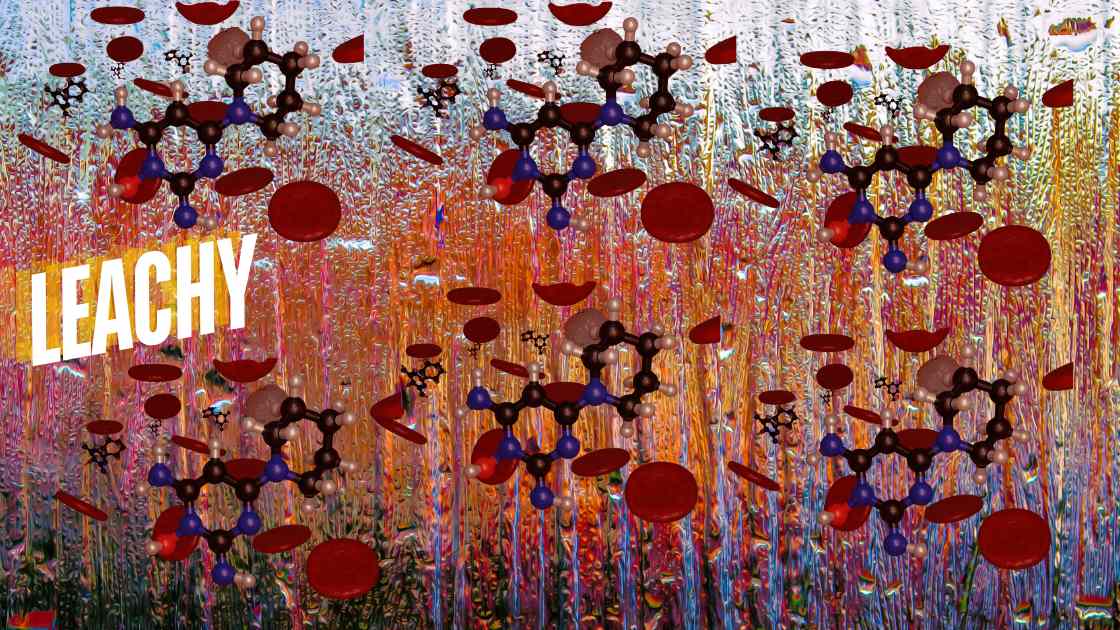The term “leachy” refers to the characteristic of a material that allows liquids to permeate or pass through it easily. This permeability often results from the material’s porous nature, which facilitates the movement of fluids. In scientific and industrial contexts, leachy materials are those that can transport liquids through their structure via microchannels or larger voids. The process, known as leaching, involves the movement and eventual removal of substances within the material, which can lead to both beneficial and adverse outcomes depending on the application. Understanding the properties of it materials is crucial for their effective use in fields such as environmental engineering, agriculture, and construction.
Table of Contents
The Basics of Porosity
Porosity is a key feature of leachy materials. It refers to the presence of tiny holes or spaces within a material that allow liquids to pass through. Porous materials can vary in their degree of porosity, ranging from slightly leachy to highly pervious. This property is determined by the size and distribution of the pores within the material.
Examples of Porous Materials
Common examples of porous materials include sand, gravel, and certain types of rocks. These materials have spaces between their particles that allow water to flow through. In contrast, non-porous materials like clay or solid concrete do not permit water to pass through easily due to their tightly packed structure.
Importance of Understanding Porosity
Understanding porosity is crucial in fields such as construction, agriculture, and environmental science. For instance, engineers need to consider the porosity of materials when designing dams or drainage systems to ensure proper water management. Similarly, farmers need to know the porosity of soil to optimize irrigation practices.
Leachy Materials in Construction
Leachy materials are often used in construction for specific purposes. Their ability to allow water to pass through makes them ideal for certain applications where drainage and filtration are essential.
Drainage Systems
One of the primary uses of leachy materials in construction is in drainage systems. Materials like gravel and sand are commonly used to create drainage layers beneath roads, buildings, and sports fields. These layers help prevent water accumulation, reducing the risk of flooding and structural damage.
Foundation Construction
When constructing foundations, it’s important to use materials that can manage water effectively. Leachy materials are often used to create a stable base that allows water to drain away from the foundation. This helps prevent water from seeping into the foundation and causing cracks or other damage.
Permeable Pavements
Permeable pavements are another application of leachy materials in construction. These pavements are designed to allow rainwater to pass through, reducing runoff and promoting groundwater recharge. They are commonly used in parking lots, driveways, and walkways to manage stormwater sustainably.
Agricultural Applications of Leachy Materials
In agriculture, understanding the leachiness of soil is vital for effective crop production. Different types of soil have varying degrees of porosity, affecting their ability to retain water and nutrients.
Soil Drainage
Proper soil drainage is essential for healthy plant growth. Leachy soils, such as sandy soils, allow excess water to drain away quickly, preventing waterlogging and root rot. Farmers often use leachy materials to improve soil drainage in areas with heavy clay soils.
Irrigation Practices
Efficient irrigation practices depend on the porosity of the soil. In leachy soils, water can quickly percolate through the soil layers, reducing the risk of overwatering. Farmers can adjust their irrigation schedules accordingly to ensure crops receive the right amount of water without wastage.
Preventing Soil Erosion
Leachy materials also play a role in preventing soil erosion. When used as a top layer or mulch, these materials can help reduce the impact of heavy rainfall on the soil surface. This helps maintain soil structure and prevents the loss of valuable topsoil.
Environmental Significance of Leachy Materials
Leachy materials have significant environmental implications, particularly in preserving water quality and managing natural resources sustainably.
Groundwater Recharge
One of the key environmental benefits of it materials is their role in groundwater recharge. When rainwater percolates through porous materials, it replenishes underground aquifers, ensuring a sustainable supply of freshwater. This is especially important in regions facing water scarcity.
Filtration and Contaminant Removal
Leachy materials can also act as natural filters, removing contaminants from water as it passes through. This process, known as natural filtration, helps purify water by trapping particles and pollutants within the pores of the material. It is a crucial mechanism in maintaining clean water sources.
Wetland Restoration
In wetland restoration projects, it materials are often used to recreate natural hydrological conditions. By allowing water to flow through and mimic natural processes, these materials help restore wetland ecosystems, providing habitat for wildlife and improving water quality.
Challenges and Considerations
While leachy materials offer numerous benefits, there are also challenges and considerations associated with their use.
Managing Excessive Drainage
One of the challenges of using leachy materials is managing excessive drainage. In some cases, rapid water percolation can lead to the loss of valuable nutrients from the soil. Farmers and land managers need to strike a balance between effective drainage and retaining essential nutrients for plant growth.
Preventing Structural Instability
In construction, the use of leachy materials must be carefully planned to prevent structural instability. For example, using highly porous materials in the wrong context can lead to foundation settling or erosion. Engineers must consider the specific requirements of each project to ensure stability and durability.
Environmental Impact
While leachy materials have environmental benefits, their extraction and use can also have negative impacts. Mining and quarrying activities to obtain porous materials can disrupt ecosystems and contribute to habitat loss. Sustainable sourcing and responsible use are essential to minimize these impacts.
Innovations in Leachy Material Technology
Advancements in technology have led to innovative solutions that enhance the properties and applications of it materials.
Engineered Porous Materials
Researchers are developing engineered porous materials that offer precise control over pore size and distribution. These materials can be tailored to specific applications, improving their effectiveness in filtration, drainage, and other functions.
Sustainable Alternatives
Sustainable alternatives to traditional leachy materials are also being explored. For example, recycled aggregates and bio-based materials can provide similar properties while reducing the environmental footprint. These alternatives contribute to a more sustainable and circular economy.
Smart Water Management Systems
Integrating leachy materials with smart water management systems is another exciting development. Sensors and monitoring devices can provide real-time data on water movement and quality, allowing for more efficient and targeted use of leachy materials in various applications.
Conclusion
Leachy materials play a crucial role in various industries and environmental processes. Their ability to permit liquids to pass through makes them valuable for applications ranging from construction and agriculture to water management and environmental conservation. By understanding the properties and benefits of leachy materials, we can make informed decisions that promote efficiency, sustainability, and positive environmental outcomes.
If you’re interested in learning more about the applications of leachy materials and how they can benefit your specific needs, don’t hesitate to explore further resources or reach out to experts in the field. Whether you’re a farmer, engineer, or environmentalist, the knowledge and use of leachy materials can contribute to a more sustainable and efficient future.

